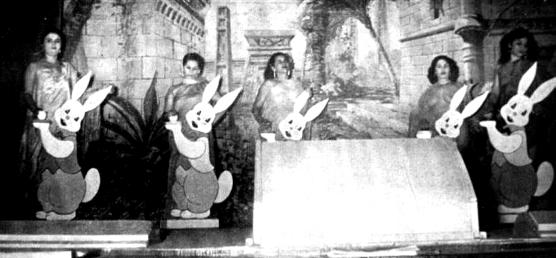I'm gonna be working on two important anniversaries in the coming weeks.
August 31, 2003, marks the 200th anniversary of
A Treaty of Demarcation and Cession, Between the United States of America and the Choctaw tribe of Indians. This treaty, signed at Hoe-buck-in-too-pa (St. Stephens) ratified the boundary line surveyed in the summer of 1803 by General James Wilkinson, Mingo Poos Coos and Alatala Hooma.
This was the first American property survey of any land in present-day Alabama and it represents the advent of the total extinguishment of all Indian title to land within the boundaries of the state.
This line of demarcation between the U.S. and the Choctaw Nation began, on the west, in the middle of the channel of the
Wax River at the point that
Ellicott's Line (first U.S. Southern Boundary- 31st parallel) crosses the river; thence up the channel to the confluence of the Chickasawhay and the Buckatannee; thence up the channel of the Buckatannee to
Red Creek; thence up Red Creek to a
pine tree on the left bank blazed on two sides, about 12 links southwest of the old trading path from Mobile to Hewhannee Towns: thence along the
old British line of partition( the Choctaw-British Treaty of 1765) to a mulberry post on the right bank of the main branch of Snake Creek;thence down Snake Creek to the Tombigbee and then the
Mobile River until it reaches Ellicott's Line at the present day Barry Steam Plant east of Ellicott's Stone.
The other anniversary will occur on May 25, 2004. This will mark the 200th anniversary of the signing of the
Forbes Purchase at Chiskatalofa, an Indian village located around Ellicott Mound #381 near the point where Alabama, Florida and Georgia intersect on the west bank of the Chattahoochee. This deed of cession of 1.2 million acres east of the Apalachicola River to John Forbes & Co.
began an entire series of treaties where Indians paid their debts with the only thing they possessed, their land. Since John Forbes moved to his sugar plantation, Canimar, in
Matanzas Province, Cuba in 1817, many of the business transactions and lawsuits associated with the Forbes Purchase occurred in
Cuba. When Forbes died in 1823, his son-in-law,Francisco Dalcourt(husband to Forbes' daughter, Sophia) was appointed executor of Forbes's estate in
Cuba. Money from the sale of the Forbes Purchase became tied up in a series of lawsuits filed in New Orleans and
Matanzas by those claiming to be owed money by the Forbes's estate.
Litigation over the property granted to John Forbes by the Indians at Chiskatalofa in 1804 remained in the courts until 1923, a century after Forbes had died, when the Florida Supreme Court ruled that submerged land granted by the Forbes Purchase was owned by the State of Florida.
After being appointed Receiver of Pubic Monies in the General Land Office in 1825,
Richard Keith Call sailed to Havana to examine the original Forbes Purchase documents . From then on, Call argued to overturn the Forbes's Purchase. According Coker and Watson:
At Call's urging, the U.S. Supreme Court delayed hearing the case until 1835. In the interim, the government sent Jeremy Robinson to
Havana to obtain documents to support the government's arguments. Fully briefed by Call, Robinson spent two years in
Havana locating and identifying documents, but he died in 1834 before any of these papers were sent to Washington. Nicholas Philip Trist succeeded Robinson and
uncovered forty-five documents in Havana, which the Supreme Court refused to admit as evidence.
This was Justice Marshall's last case and he upheld as perfectly legal the Forbes Purchase land grant.








 Stern laws forbid the operation of houses of prostitution. Havana, however, is full of them. One enterprising Spanish madam developed the lushest bordello in town on the policy of offering the facilities of the house gratis to deserving government officials.
Stern laws forbid the operation of houses of prostitution. Havana, however, is full of them. One enterprising Spanish madam developed the lushest bordello in town on the policy of offering the facilities of the house gratis to deserving government officials.
 FOR A LONG TIME, Havana has enjoyed the reputation of being the sexiest city in the Western hemisphere. To nearly everyone–and Americans especially–her main commodities have been rum, cigars and women.
FOR A LONG TIME, Havana has enjoyed the reputation of being the sexiest city in the Western hemisphere. To nearly everyone–and Americans especially–her main commodities have been rum, cigars and women.